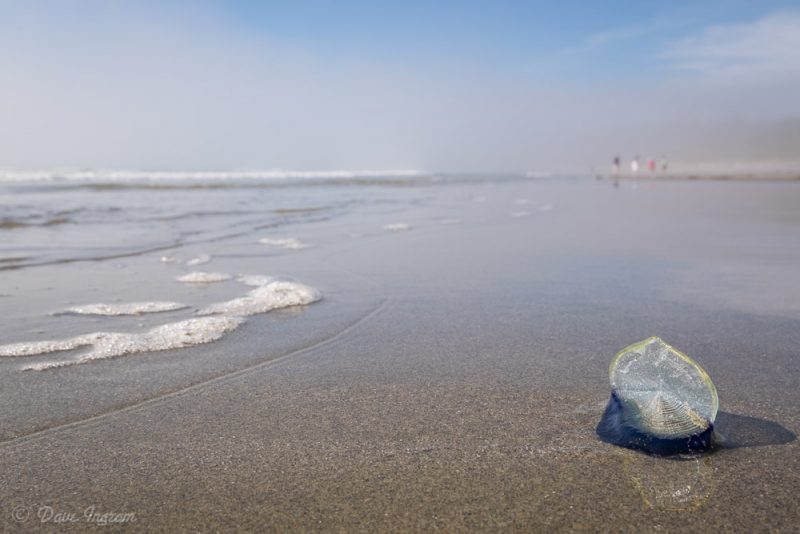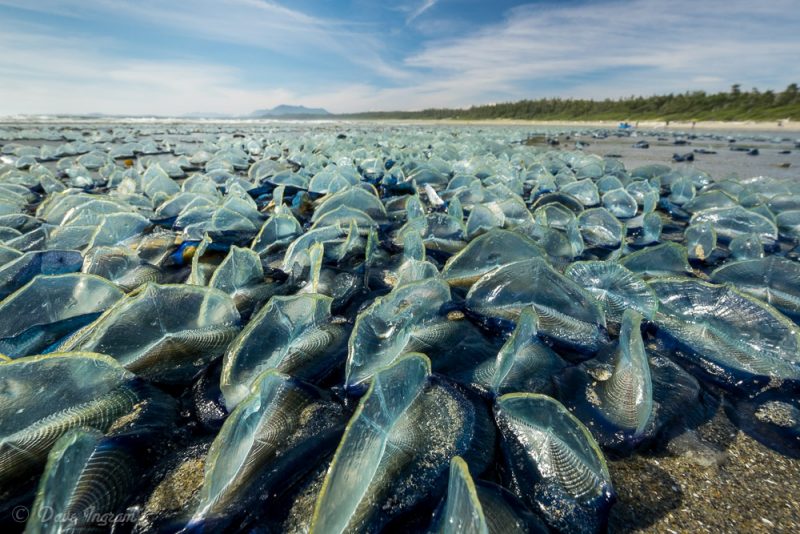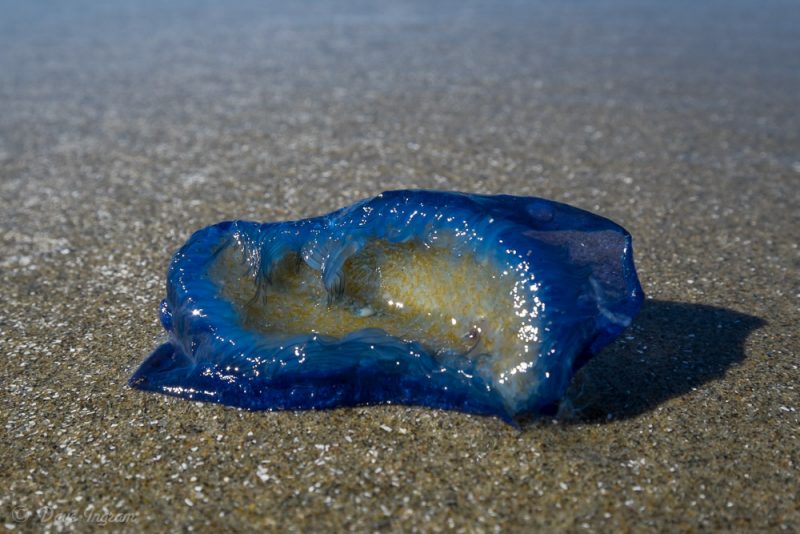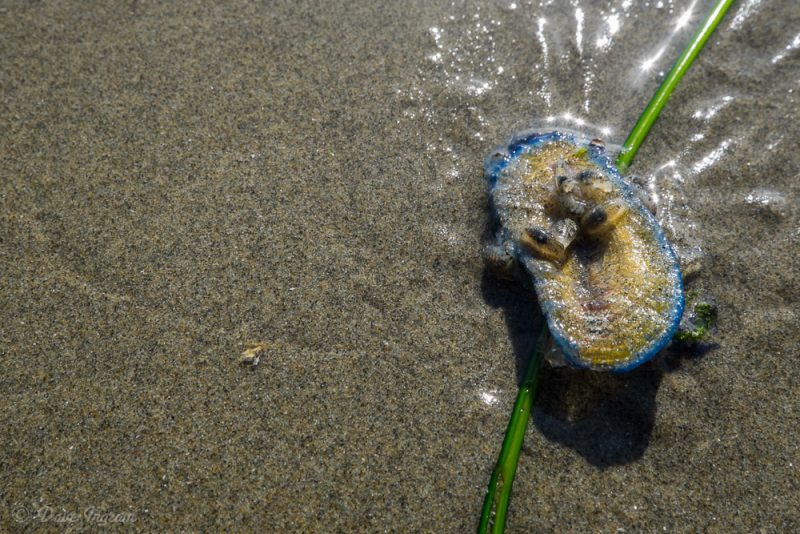
It’s like some ill-conceived, poorly planned invasion on the shores of the west coast of Vancouver Island. In the last week, small blue jellyfish-like creatures have been landing on the beaches of Pacific Rim National Park Reserve in the millions—large swaths of them line the strand line at Wickaninnish Beach. More continue to come in daily.

These fascinating creatures are Velella velella, a member of the phylum Cnidarian (which also includes more familiar creatures like jellyfish and sea anemones). They go by the common name of “By the Wind Sailor” which references both their upright transparent sail and the fact that they go where the wind takes them (in this case onto our shores). The genus and species name Velella refers to “vellum” or sail.
There are two schools of thought on their nature. The most widely accepted idea is that the Velella are a colony of very specialized hydroids joined together under the floating raft of the sail. Specialized polyps called dactylozooids capture food and protect the organism, gastrozooids do the job of ingesting food, and gonozooids serve a reproductive role.
More recent research suggests that the animal is not in fact a colony, but a highly specialized individual polyp. Velella velella have recently been reclassified from Siphonophora (which includes colonial hydroids like the Portuguese Man-of-War) to Anthomedusae (athecate hydroids). In essence, the animal is more or less like an upside-down sea anemone attached to a float.

Like other members of Cnidarian, the Velella velella also has stinging nematocysts. You may experience a slight tingling handling the blue part of the animal and it is a good idea to avoid touching your mouth or eyes after touching it. One surfer I talked to this week got one in his mouth and his lips were numb for several hours. Picking it up by the transparent sail to get a closer look is fine.

Velella velella typically spend most of their lives out on the open ocean of the Pacific floating where the wind takes them. They feed opportunistically on small prey that are immediately below the surface of the water. In turn they are eaten by specialized species of nudibranchs, bubble rafting snails, and the ocean sunfish (mola-mola). Once on shore, they are preyed upon by beach scavengers like the water-line isopod. The delicate blue jelly fringe is worn off quickly in the abrasive sand.
The shear number of Velella on the beaches is astounding, in 5 seasons out at Pacific Rim National Park Reserve I’ve never seen anything like it. This evening there were still plenty of them in long lines on the beach, but nothing like the large numbers of earlier in the week. The best time to view and photograph the Velella is on a dropping tide. The high tide brings in fresh Velella and pushes the previous (now decaying) wave further up the beach. The receding water continues to bring in Velella but deposits them on relatively clean beach. Make sure to see them soon, they won’t last long although their smell may linger!
